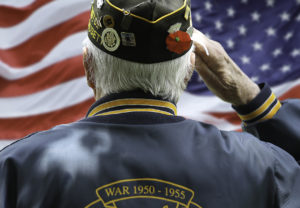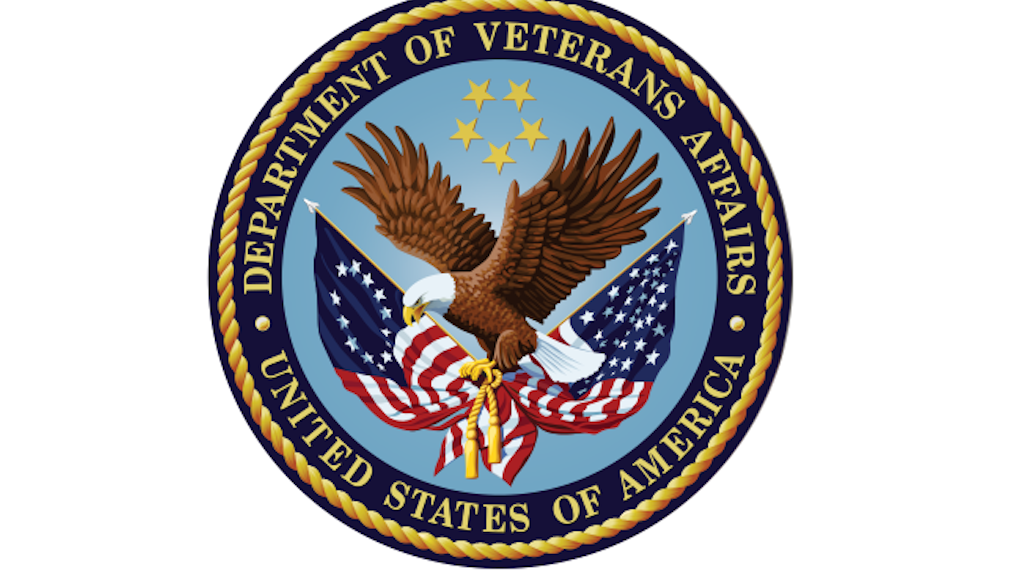The Department of Veterans Affairs (VA) is on the cusp of launching a new online portal aimed to help veterans better understand, access and benefit from the many programs they offer. It’s called “Vets.gov.” and it’s the culmination of a project underway since the spring, a collaboration between the VA and four other independent private sector contractors.
“The main goal of Vets.gov is to improve veterans’ digital experience with the VA,” said Kelly A. O’Connor, Department of Veterans Affairs, Digital Service. “The mission is to enable veterans to discover, apply for, track and manage the benefits they’ve earned.”
And have it be as intuitive and user-friendly as possible.
“We’re really about enabling veterans to do something on the site, rather than explaining something to them,” O’Connor explained. “Rather than having veterans go through long pages of legalese content that’s confusing and sometimes leaves you in a loop, [they’ll] be able to access VA services quickly and easily on any device.”
More integrated and consolidated than the unwieldy online experience of the VA’s past, the VA says this project’s aim is to remain, above all else, straightforward and uncomplicated.
And a welcoming destination.
“Vets.gov will be the number one source for veterans to learn about the benefits and resources available to them through VA,” said Martin A. Taylor, Staff Assistant, Office of the Secretary for the VA. “VA is in the process of removing barriers that prevent veterans from understanding their benefits. Veterans shouldn’t have to go through five, six, or eight different websites to find out this information.”
“Veterans shouldn’t guess what benefits are available to them. So as we start pulling together benefits and services under one website, we hope that … once they go to Vets.gov, they not only learn what they’re eligible for, but how to get it.”
O’Connor explains that there are a number of other facets that set it apart from what’s been offered digitally in the past.
For one, it’s the process from which it was created. Rather than a “big bang launch”, it’s been crafted little by little, over time, through data they’ve received from real veterans (over 200) who have used the site during testing.
According to the VA, through Vets.gov, qualifying vets will be able to either access or discover the benefits covering healthcare (prescriptions, for example), education (G.I. Bill) among others.
“We actually launched Vets.gov back in November, in 2015 and, let me be clear: this is not just another website,” said O’Connor. “This is full, modern technology platform in the cloud that we launched, and when we launched it we had just a little bit of content and maybe three or four services, maybe five or ten percent of what the site would be. And everything is done in a way that veterans are actually driving the design and the prioritization of features that we deliver.”
Greg Gershman, who co-founded the tech company Ad Hoc — responsible for salvaging Healthcare.gov after its rocky start in 2013 — agreed that the project has taken a ubiquitious,, cutting-edge approach to building government technology. In May, the DC-based firm was awarded the VA’s “technical support” contract to design, develop and operate the platform. They joined ID.me, tasked with managing identity verifications; the So Company, a content team staffed with veterans and Accenture Federal Services, a global tech consulting firm.
“The government needs different kinds of people and different kinds of companies and different kinds of expertise to solve these kinds of problems,” he said. “At Ad Hoc that’s the kind of stuff we focus on and want to do.”
However, Gershman is well aware of the obstacles that need to be overcome.
“There’s a tremendous number of challenges and history here. Everyone that works at VA is incredibly smart and has been struggling with these problems for years. We don’t want to seem arrogant or say we’re going to succeed where everyone else has failed, because this is an effort that only works if all of VA gets behind it. Everyone says this is how we’re going to serve the veteran community and this is what’s best, then we’re going to go that extra mile to have the ease that they deserve.”
“But we’re seeing that.”
One of the challenges, for example, is the fact that some veterans have little to no access to the internet. O’Connor explains that this issue, among others, is being examined and in the process of being solved for.
“Most veterans have a mobile phone, so all the things we’re doing through Vets.gov are accessible on a mobile phone. Some of the secondary goals of Vets.gov are to make accessing online services much easier for veterans so that more veterans will go to the website, thereby freeing up the call center or in-person VA resources. By having a really good website that more veterans are using, we’re decreasing the number of calls to the call center.”
Basically, she says the portal will make room for veterans calling up the VA as well as walking into a facility.
“The biggest call-to-action when we’re out presenting the site to veterans is [to say] please email us at feedback@va.gov,” O’Connor said.
The VA is encouraging vets to be a part of their user research, and participate in making the site as easy to use as possible.




































